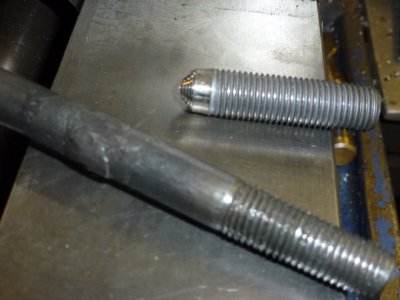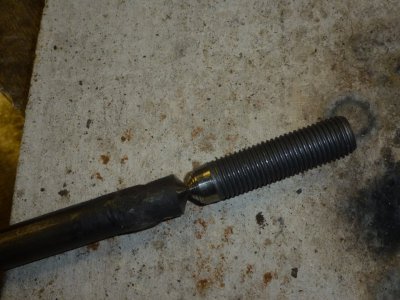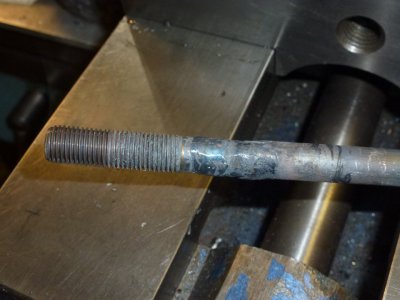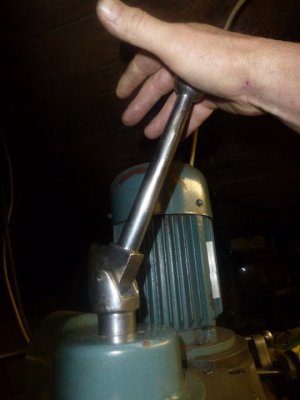- Joined
- Feb 7, 2013
- Messages
- 2,533
Today while tightening up the draw bar on my Enco mill, I felt something give way. The threads on the end of the draw bar were worn
and had slipped. I found a suitable bolt to modify to replace the worn threads.
In the front of this photo is the end of the draw bar as it came out of the mill. The head of the donor bolt was machined away and tapered
so I could put it back together.
This is how I positioned the parts to weld together with the acetylene torch.
Now the draw bar is welded in two spots but no big deal as long as the welding is good. I did experience a little binding so had to
reheat the weld area and give it a little tweak. It's back to it's old self now so I'm back in business, well play actually.
and had slipped. I found a suitable bolt to modify to replace the worn threads.

In the front of this photo is the end of the draw bar as it came out of the mill. The head of the donor bolt was machined away and tapered
so I could put it back together.

This is how I positioned the parts to weld together with the acetylene torch.

Now the draw bar is welded in two spots but no big deal as long as the welding is good. I did experience a little binding so had to
reheat the weld area and give it a little tweak. It's back to it's old self now so I'm back in business, well play actually.

